#roseate tern
Explore tagged Tumblr posts
Text
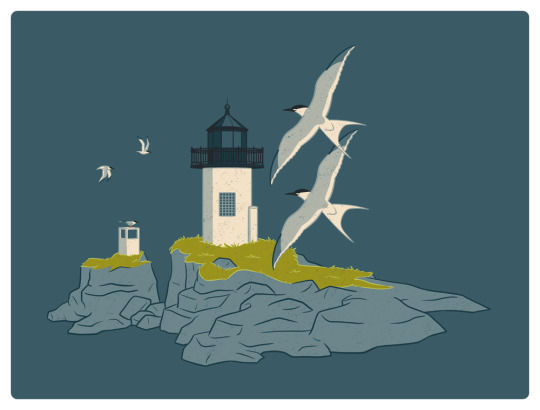
Pond Island Light, Kennebec River, Phippsburg, Maine. Until 1937, Pond Island hosted a colony of terns, but the growing gull population forced them to clear out. In 1960, when the light became automated, all the buildings, except the tower were removed. In '73 Care of the island was transferred from the Coast Guard to Fish and Wildlife to be re-established as a tern colony. Thanks to the help of National Audubon, tern decoys and calls were deployed, gull nests removed, and finally in '99 the first common tern chick in over 60 years hatched. Then in 2003, Pond Island recorded its first successful breeding pair of endangered roseate terns.
#Pond Island Light#Kennebec River#Phippsburg#Maine#illustration#jada fitch#art#bird#drawing#design#nature#Pond Island#lighthouse#maine lighthouse#Fish and Wildlife#Fish and Wildlife Service#National Audubon#tern colony#island#maine island#roseate tern#terns#tern#Sterna dougallii#maine artist#illustrator#artist#lighthouse art
56 notes
·
View notes
Text
The State Bird Initiative: Connecticut (#5) - Results
Results time for Connecticut! Had a lot of difficulty choosing birds for this state, but I finally did it, and here we are one week later! Now, post Tumblr poll and, we've got our chosen candidate. So, Tumblr, which bird did you choose as the State Bird of the Constitution State?

...Uh oh.

SBI Elected State Bird of Connecticut: Connecticut Warbler (Oporornis agilis)
Welp. We were bound to have a problem like this eventually, so it's better it happened on state number 5, rather than later. But, uh, yeah, Tumblr chose the Connecticut Warbler (Oporornis agilis) for the State Bird of Connecticut. A bird named after the state because it was first seen there by Alexander Wilson. That said...allow me to quote my original post here.
No. Look, I'm just gonna say this now: no. The Connecticut Warbler (Oporornis agilis) not only doesn't breed in the state (and possibly has never bred in the state), but it's pretty much not found there. Like, at all. This is not an easy warbler to get anywhere in its range in the US, but Connecticut isn't included in that distribution. "But lonelywretch," you scream at your computer screen, 'why is it called the Connecticut goddamn Warbler if it isn't even from the state?'...it's called the Connecticut Warbler because its describer, ornithologist Alexander Wilson, first saw it in a fly-by during migration while in Connecticut...They do fly through the state very occasionally during migration, but it's definitely not a reliable bird to count on for local birders there. Honestly...bad bird for the state.
In other words...

Yeah, uh, peeps, when I say you should probably read the context section in the poll, you should probably read the context section in the poll. That said, it's extremely possible that this was the meme choice for the 46 people who chose this species, but...yeah, I definitely disagree with this one, sorry. BUT...that's not how democracy works. This is, for good or for ill, the SBI Elected State Bird of Connecticut. However...that's not the personal choice for the initiative, but we'll get to that after the jump!
Keep in mind, by the way, that for all intents and purposes, the Tumblr-chosen State Bird of Connecticut is and will remain the Connecticut Warbler, unless another voting session is requested by enough people. However, as always, after the jump is located a set of curated choices for ornithological state symbols, which is a suggested set of species, rather than the Tumblr-voted set. With that said, feel free to check out the other choices after the jump for SBI Elects, but outside of that, see you next time in Massachusetts!
The State Birds Initiative Personal Pick - Connecticut (#5)

State Bird of Connecticut (SBI): Tufted Titmouse (Baeolophus bicolor)
Y'know, I was genuinely surprised that people didn't go for this one for the lulz, but hey, I'm not terribly good at predicting the ways and wiles of the internet. But as time went on, I sort of thought about it more, and this may be a solid bird for the State Bird of Connecticut for a few reasons. The Tufted Titmouse (Baeolophus bicolor) is an extremely common small songbird in the northeastern United States, very commonly found in backyards and on birdfeeders in the state and elsewhere. I originally chose them because they have that crest that makes them look like a classic macaroni, which you may remember as the satirical character referenced in Yankee Doodle, Connecticut's national anthem. And yeah, I think that's a good initial reason...but I also see this as an interesting opportunity.
See, the other thing I said about Connecticut is that it's a diverse state with unique perspectives and unique people. And an interesting way of expressing that could be through the Tufted Titmouse itself. This is a bird, I'd mentioned, that practices kleptotrichy, the plucking of hair from mammals to use in nests. As a result, they're also a bird that responds positively to provided nest material, especially if it's made of animal hair. That means that everybody can comb their dog or cat, put their hair in a box outside, and let the titmice use it for nesting material. It also means that, knowing Nutmeggers, there's opportunity for some really creative hair and wool offerings, and unique nests. Hell, it could be an excuse to Nutmeggers to put up more nest boxes for birds in general, fostering the breeding of multiple species in the state. Basically, the Tufted Titmouse could be a road to foster bird love in Connecticut, and still could serve as a symbol for kids all over the state. That's my pitch, and let's move onto the next entry!

SBI State Game Bird of Connecticut: American Black Duck (Anas rubripes)
As I said in the description for this species in the original post, the American Black Duck should get some attention! Two things about this choice. First, game birds are members of the Galloanserae, meaning they aren't just chickens, turkeys, and quails. They're also ducks, mergansers, geese, swans, and members of order Anseriformes. So, ducks are on the table. Coots and rails are too, as they're classified as game birds by the United States government, as are a few other species. In fact, I was originally going to give this space to crows, but the black duck was a better fit. That said...well the second point here is that this isn't necessarily the best state for the American Black Duck (Anas rubripes) as a choice for State Game Bird. But it still needs attention, as I said. Get more context for this choice in the original post, but yeah: the choice of Game Bird for a state that doesn't have a lot of hunting (yeah, that's why this choice was so difficult) is the American Black Duck!

State Raptor of Connecticut (SBI): Sharp-shinned Hawk (Accipiter striatus)
Again, check the original post for elaboration on this one, but I think this tiny raptor is a good choice for one of our smallest states! It also works, in my opinion, because it's a species of needed focus in Connecticut, and a relatively difficult species to see while still being present all over the state, meaning people would be looking...within reason. And yeah, this one's a harder fight for acceptance, since it eats other birds, but I think it's good to broaden focus a bit. But that said...why not the Osprey (Pandion halieetus)?
Obviously, I made a case for the Osprey, and a pretty good one, I think. But frankly...other states should have the Osprey. And most of us probably have an idea of the state I mean, but we'll cross that bridge...eventually. Point is, the Osprey is great and one of my favorites...but the Sharp-shinned needs Connecticut a lot more. We'll come back to the seahawk pretty soon, though, and proabably go through this fight all over again.

SBI's Big Fifty - Connecticut: Blue-winged Warbler (Vermivora cyanoptera)
Well, this one's a no-brainer. This is one of the most sought-out warblers for birdwatchers and birders alike, and is always a treat to see or hear. This is absolutely the right choice here, especially considering its population declines across its rane necessitating focus on the species. Plus, there's also its two famous relatives I barely mentioned previously, but they're a big conservation focus in their own ways. This is a bird to look for in any states, but since Connecticut forms a significant portion of its breeding population, why not here! Outside of that, just like the original post, I don't have too much else. Big Fifty choice presented! Onto the last category.

State Conservation Focus of Connecticut (SBI): Roseate Tern (Sterna dougallii)
Hold on, what's this? Coming from outside the ring with a foldable metal chair in hand, it's the Roseate Tern (Sterna dougalli)! What a...tern of events! OK, sorry for that last quip, couldn't stop it. Anyway, this is a species I haven't brought up! To be clear, I really, really thought about putting the Snowy Egret or Osprey here, but to be honest, the former barely breeds in CT, and the latter I'm still saving for another state. Another contender, the Piping Plover (Charadrius melodus) kind of has to be saved for another state or two, and a lot of other birds fall under the same fate. So...why the Roseate Tern? Well, to be honest, this is only one representative of a larger group of birds: shorebirds in general.
See, CT has a number of regions of conservation concern, and birds associated with them. But the shoreline goes mostly ignored for Connecticut, despite it having a fairly long one for such a small state. And, considering the state's deep link with nautical matters, it really should have its coast get some more focus. So, the Roseate Tern is actually meant to represent the shorelines of CT. Plus, the state hosts one of the larger breeding populations for the species in the USA, although not the largest, to be fair. But CT doesn't have the largest breeding population of...well, any bird species, it would seem. So, better to choose a species with a decent population size than anything else. Representing Connecticut's coastlines is the Roseate Tern, a pescivorous beach-dweller with a surprising amount of color, a fairly significant historical tie to the United Kingdom, and a tendency to be overlooked in favor of larger and more famous birds. Which, when you put it that way...yeah, this works.

With that last bird, we move onto a new state...and a potential future problem. Yeah, uh, the Connecticut Warbler mishap has made me realize the "no breeding population" rule needs to be more strictly enforced for the sake of this project. So, from here on out, if it doesn't breed in the state, it ain't a candidate for the State Bird, no matter ~~who its daddy is~~ what its name is. So, yeah, that adjustment should help matters. Plus, I'll seriously consider other similar cases moving forward. But, for now, the next state doesn't have that problem! No birds named after the Puritan State! See you soon, in Massachusetts!

See you next time, and happy birding!
Introduction to the State Birds Initiative
1. Delaware - Poll | Results 2. Pennsylvania - Poll | Results 3. New Jersey - Poll | Results 4. Georgia - Poll | Results 5. Connecticut - Poll | Results 6. Massachusetts - Poll | Results
#bird#birds#birblr#birdblr#bird tumblr#birding#birdwatching#bird watching#state bird#state bird initiative#state birds initiative#poll#long post#longpost#tumblr poll#birds of tumblr#blue-winged warbler#connecticut warbler#warbler#roseate tern#tern#tufted titmouse#american black duck#duck#sharp-shinned hawk
6 notes
·
View notes
Text

cuddly Roseate Terns!
3 notes
·
View notes
Note
trick or treat!!! i'll take one birb pls :>

One roseate tern for you!
25 notes
·
View notes
Text
Because female birds can lay eggs regardless of whether they are fertilized, however, each partner in a lesbian pair usually contributes a full clutch of eggs to their nest even if she hasn't mated with a male. As a result, female homosexual pairs often lay what are called supernormal clutches, that is, double the number of eggs usually found in nests of heterosexual pairs.¹⁰
10. Supernormal clutches have also been reported for pairs of male Emus, probably because more than one female has laid in their nest. What might be termed "subnormal" clutches – i.e., nests containing fewer eggs than are usually found for heterosexual pairs – are reported for female pairs of Blue Tits. And "super-supernormal" clutches occasionally occur in heterosexual pairs of Roseate Terns: as a result of within-species parasitism and possibly also egg transfer (see chapter 5 for more on these phenomena), some nests containing more than double the number of eggs found even in supernormal clutches (as it also true for "dump" nests in many Ducks and Geese).
"Biological Exuberance: Animal Homosexuality and Natural Diversity" - Bruce Bagemihl
#book quote#biological exuberance#bruce bagemihl#nonfiction#birds#lesbian#eggs#clutch#homosexuality#supernormal#emu#dromaius novaehollandiae#subnormal#blue tit#cyanistes caeruleus#parus caeruleus#roseate tern#sterna dougallii#ducks#geese
3 notes
·
View notes
Text
Most such nests appear to belong to heterosexual pairs.
"Biological Exuberance: Animal Homosexuality and Natural Diversity" - Bruce Bagemihl
#book quote#biological exuberance#bruce bagemihl#nonfiction#supernormal clutches#nesting#heterosexual#caspian tern#sterna caspia#roseate tern#sterna dougallii
0 notes
Text
During the mating season, Caspian and Roseate Terns usually congregate in large colonies which may contain up to 500 pairs in Caspians and several thousand in Roseates.

"Biological Exuberance: Animal Homosexuality and Natural Diversity" - Bruce Bagemihl
#book quotes#biological exuberance#bruce bagemihl#nonfiction#caspian tern#sterna caspia#roseate tern#sterna dougallii#mating season#congregation
0 notes
Text










The current Aquatic Bird House opened on September 24, 1964, on the foundation of the original house.
#Anhinga#Aquatic Bird House#opened#24 September 1964#60th anniversary#US history#Bronx Zoo#the Bronx#my favorite zoo#New York City#fauna#flora#animal#original photography#summer 2019#Storm's Stork#Sulawesi hornbill#Scarlet Ibis#Snowy Egret#Eurasian oystercatcher#Micronesian kingfisher#Laughing kookaburra#Roseate Spoonbill#Forster's Tern#indoors#tourist attraction
4 notes
·
View notes
Text
I didn’t have quite as much time for birding this year because of work but I’m hopeful that will change next year since I’m switching jobs! Still very grateful to get several new lifers under my belt (including the common yellowthroat and Virginia rail). Here are my favorite bird shots of 2024!









I sincerely hope 2025 brings you lots of fantastic wildlife sightings!
244 notes
·
View notes
Text


Petit Manan Lighthouse, Petit Manan Island, Steuben. Possibly my favorite lighthouse. In the summer, this island is home to hundreds of birds. Including Atlantic puffins, arctic, common and roseate terns, as well as black guillemots and many more. Decided I couldn't draw them all, but here's a couple attempts to try and capture the island's vibes. Can you spot the oystercatchers? MERCH
#Petit Manan#Petit Manan Island#Petit Manan Light#Petit Manan Lighthouse#Steuben#Maine#Lighthouse#light#island#Maine island#art#illustration#design#sticker#National Wildlife Refuge#Maine Coastal Islands National Wildlife Refuge#Maine Coastal Islands#breeding colony#terns#tern colony#puffin#Atlantic puffin#black guillemot#sea birds#sea bird#arctic tern#flying#in flight#bird#birds
3K notes
·
View notes
Text

Roseate tern chick (Sterna
dougallii) from EER (Eastern Egg Rock island, Maine) a few years ago
*handled with appropriate state and federal permits for banding and biological research*
186 notes
·
View notes
Text

A second illustration for @ics_seychelles featuring #Seychelles Islands seabirds. Shown are Magnificent #Frigatebird Lesser Frigatebird, Brown #Noddy Lesser Noddy, Red-Tailed #Tropicbird White-Tailed Tropicbird, Tropical #Shearwater Wedge-Tailed Shearwater, Sooty Tern, Bridled Tern, Roseate Tern, and White #Tern also called the #FairyTern
291 notes
·
View notes
Text
I am on Spring break so I finally get to focus on birding again! Today's birds:
Little blue heron
Black vulture
Great egret
Sandhill crane
Mourning dove
Cattle egret
Great blue heron
Anhinga
Double crested cormorant
Red winged Blackbird
Limpkin
Wood stork
White ibis
Muskovy duck
Boat-tailed grackle
American crow
American coot
Common gallinule
Common grackle
Glossy ibis
Palm warbler
Common grackle
Osprey
American purple gallinule
Wood duck
Red shouldered hawk
Pied billed grebe
Royal tern
Eastern Phoebe
Roseate spoonbill
Black-bellied Whistling duck
Tricolor heron
Northern harrier
Yellow rumped warbler
Tree swallow
Swallow tailed kite
Ring billed gull
Turkey vulture
Little blue heron
Mallard
White pelican
Red eyed vireo
Mulard
Pekin x Mallard Hybrid (there was this fascinating flock of ducks consisting of mallards, feral pekins, muskovy ducks, mulards (muskovy x mallard hybrid), and Pekin/mallard hybrids)
Feral American pekin
99 notes
·
View notes
Text
Females in homosexual pairs that copulate with males in order to fertilize their eggs are functionally bisexual, although they retain their primary bond with the other female. Other female pairs may be exclusively homosexual for the duration of their pair-bond, since they do not lay fertile eggs. Some females are also sequentially bisexual, alternating between male and female partners in different breeding seasons.
"Biological Exuberance: Animal Homosexuality and Natural Diversity" - Bruce Bagemihl
#book quote#biological exuberance#bruce bagemihl#nonfiction#caspian tern#sterna caspia#roseate tern#sterna dougallii#bisexual#lesbian#pair bonding#breeding season
1 note
·
View note
Text
In addition, it appears that females in some populations occasionally "steal" eggs from others' nests, sometimes transferring eggs from as many as three other nests into their own.
"Biological Exuberance: Animal Homosexuality and Natural Diversity" - Bruce Bagemihl
#book quote#biological exuberance#bruce bagemihl#nonfiction#caspian tern#sterna caspia#roseate tern#sterna dougallii#lesbian#eggs#theft
0 notes
Text
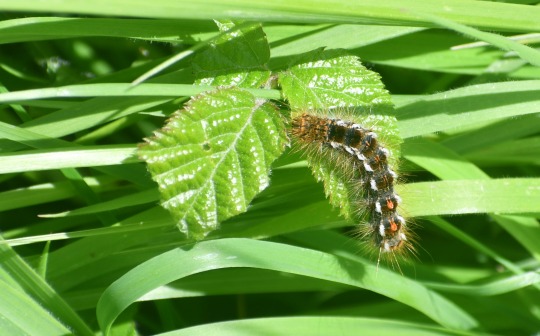
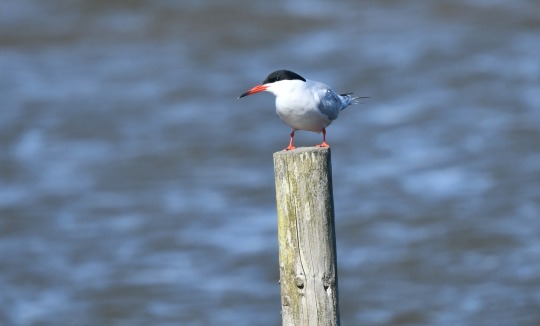
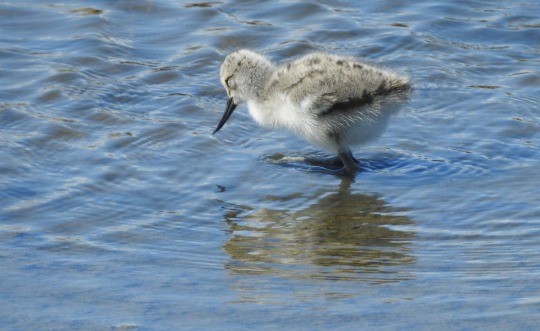
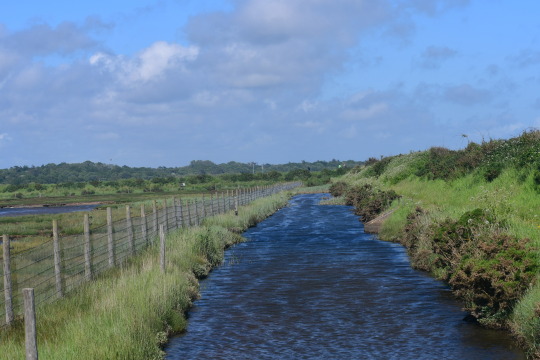
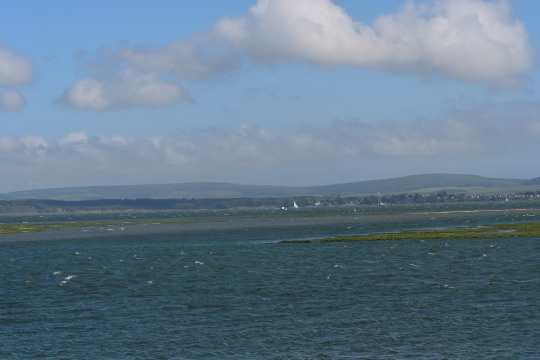

26/05/2024-Brown-tail moth caterpillar, Common Tern, Avocet chick and views in a sunny time at Lymington this afternoon.
Gorgeous Roseate Terns one of my birds of the year, Little Tern, Great Black-backed Gull, Gadwall, Eider, Shelduck, Ringed Plover, Dunlin, Oystercatcher, Swifts circling overhead which was joyful to see, Redshank and Lapwing chicks I'd not seen chicks from the former before, broad-leaved clover, gladiolus and oxeye daisy were other highlights.
#photography#birdwatching#caterpillar#birds#ringed plover#dunlin#shelduck#common tern#avocet#wading birds#happy#gadwall#eider#2024#walking#europe#england#uk#new forest
7 notes
·
View notes